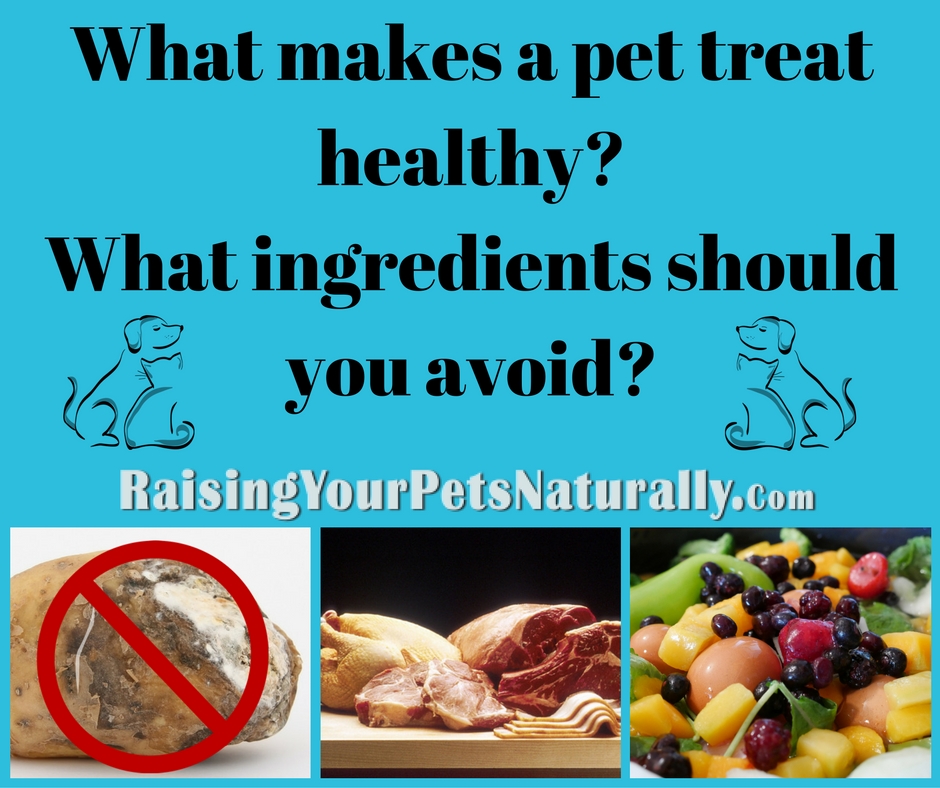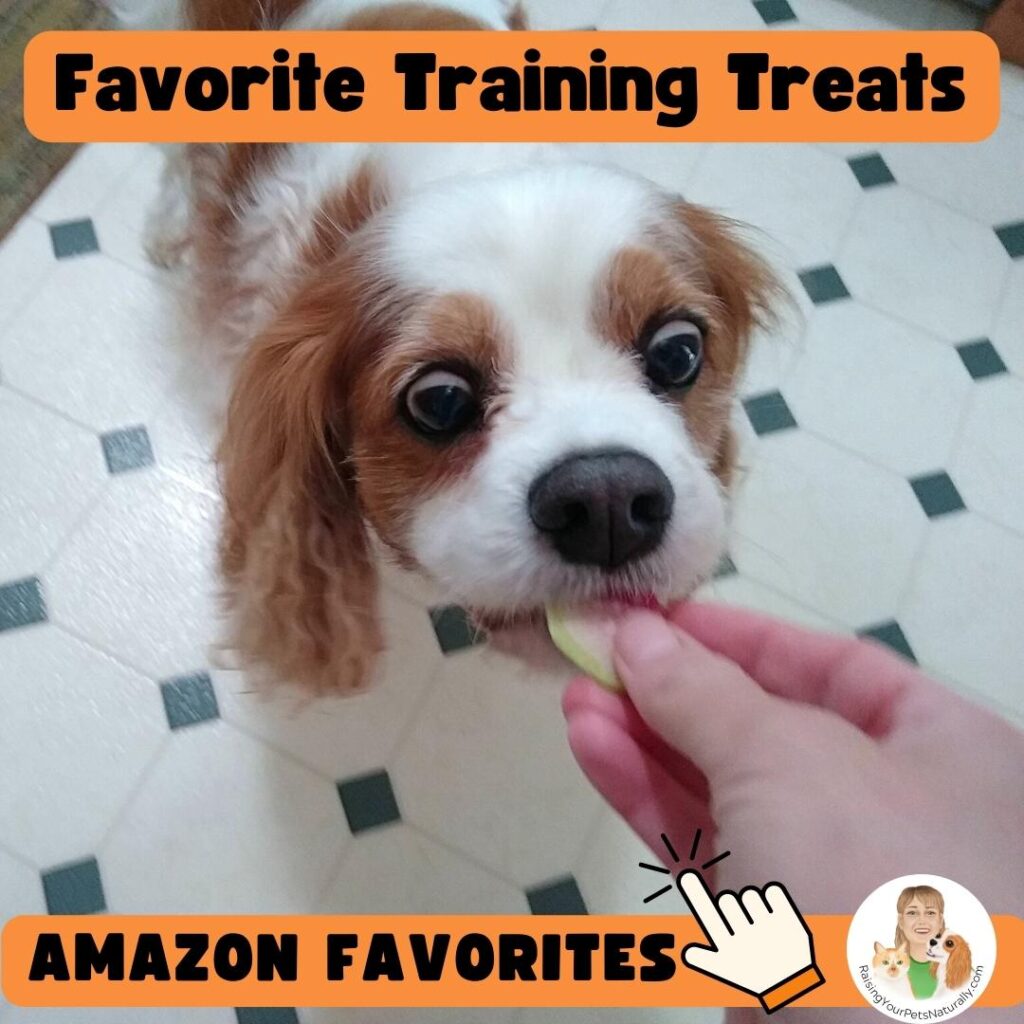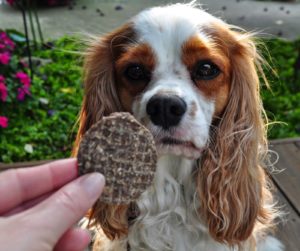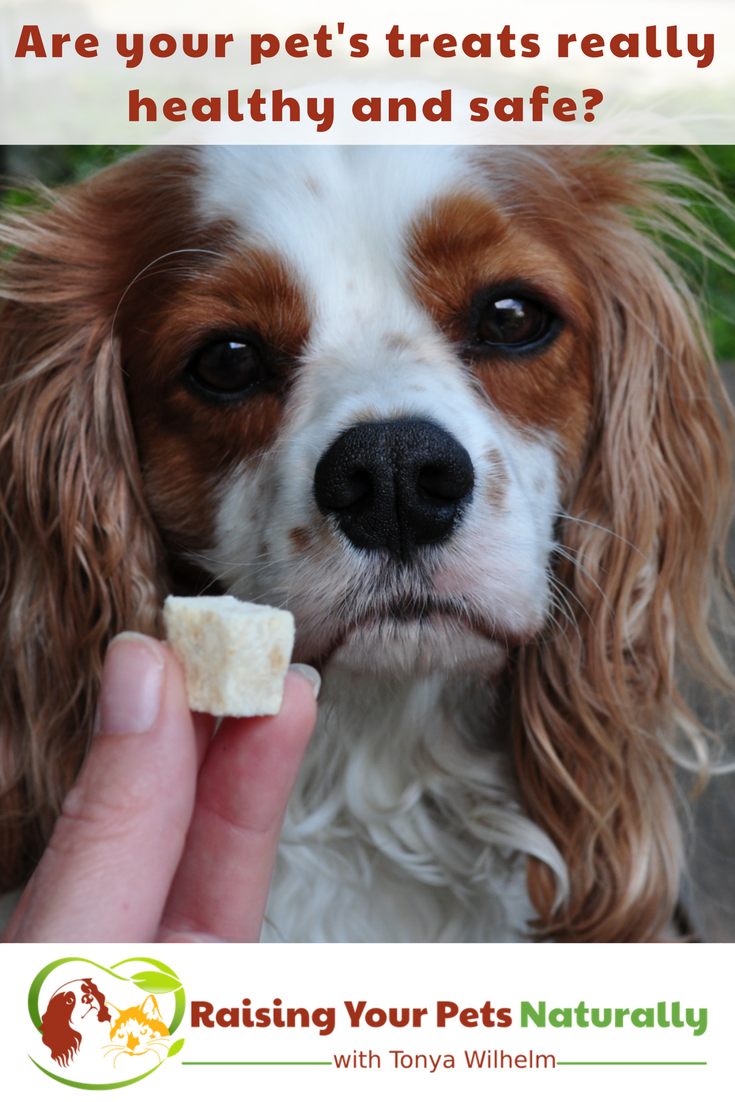Google Adsense—>

Healthy Dog Treats, Organic Dog Treats, Healthy Cat Treats.
How do you really know what is a healthy dog or cat treat?

You may have found our website by searching for “healthy dog treats.” But what does that phrase even mean? This article can also relate to healthy cat treats. I’m sure a lot of people have a lot of strong opinions on the subject of healthy dog treats. So, I will just give you my thoughts and what I consider when feeding Dexter The Dog his dog treats. I won’t review any particular dog treats on this page, but you can visit our dog treat reviews, dog chew bone reviews, dog food, and dog mix reviews here and even how to stuff a hollow dog chew.
Watch the video on reading ingredient labels and don’t forget to subscribe!
The very first thing I do when choosing a healthy dog treat for Dexter is look at the ingredients. Yes, the actual ingredient list, not just the photos on the front of the package, which can actually be very deceiving. Even the “flavor” can be deceiving. You might be surprised to learn that sometimes when a dog treat says “chicken flavor” they truly mean chicken flavor, and not any real chicken! So that leads to my first No ingredient.

My top 10 ingredients that should NOT be in dog treats:
-
- Flavors of any kind, natural or artificial: No artificial or natural “flavors” of any kind. If it says “flavor” in the ingredient list, back on the shelf it goes. It’s not real food, guys. And if it’s not a real food ingredient, it has no place in my dog’s treat, or dog food.
- Added salt, regular or sea salt: Nope, no reason to add salt to my dog’s treat. Every living creature needs sodium in its diet, but too much can cause problems such as seizures, diarrhea, and extra water intake. A lot of foods have naturally-occurring sodium, so you do not need extra salt added to treats.
- Sugar of any kind, including high corn fructose corn syrup or cane sugar: I shouldn’t need to tell you this. If we add sugar or high fructose corn syrup, we are truly just adding empty calories. Not only are these ingredients bad for our dog’s health, but they will also hop them up, and they can become hyperactive.
- Sorbitol: A sugar commonly found in berries, but prepared synthetically.
- By-products or digest: Ewww! I want to make sure my dog receives healthy food, not what is left on the floor of some meat manufacturing plant. Or carcasses from veterinary practices! Scary, isn’t it? Again, I want to know what is in that bag of treats.
- Coloring, artificial or natural: Why? Why would a pet treat manufacturer put dye or coloring in my dog’s treat? To please the consumer’s eyes, of course. Especially when we are talking about artificial food coloring. Artificial anything is a chemical process and has a long list of possible side effects. And don’t be fooled by “natural food coloring.” Natural can be made by things like bugs and rocks!
- Animal fat or anything “animal”or “meat”: What kind of animal or meat? Again, what the heck is in there, anyway? When I read it, I should have a very clear picture of what it is.
- Chemical Preservatives: Chemical preservatives of any kind should be avoided. Healthy does not equate to chemicals. No BHT (Butylated Hydroxytoluene), BHA (Butylated Hydroxyanisole), Ethoxyquin, TBHQ (tertiary butylhydroquinone), Propyl Gallate, Propylene glycol, Sodium Nitrite. BHA, BHT, and Ethoxyquin are banned in human foods.
- Corn, wheat, or soy: A lot of our dog friends are allergic or have a low tolerance to these ingredients. According to PetCareRX, that excessive soy may contain estrogen that might provide some estrogen-like activity in your dog and contribute to slightly lower thyroid hormone levels.
- Glycerin, vegetable glycerin, or glycerol: Glycerin or glycerol can actually be produced as a by-product of diesel fuel! It will be unlikely you will know the difference from reading the ingredient list (although vegetable glycerin is plant-based, not from fuel). This is an ingredient in dog treats that helps make a treat soft and sweet. It is not uncommon for dogs to get a big case of diarrhea from eating treats with this product. Dexter is one of them.

So what does that leave us? Well, a lot of things really. When Dexter gets something to eat, whether it’s his dog food or dog treats, I want it to be real food. Things that I can find in real life, not something that is synthetically made, or a by-product of something else. I personally prefer ingredients that are organic or wild-caught in countries or bodies of water that are known to be clean and environmentally friendly. Not China, of course. So that leads to sourcing of the ingredients. Read the article on Organic Dog Food to understand a bit more about organic and labeling.
Shopping for Healthy Dog Treats
After I look at the ingredient list of Dexter’s potential healthy dog treats, the next thing I want to know is where the INGREDIENTS were sourced. “Made in the USA” only means that the treat was put together in the United States, not that the ingredients came from the US. Sometimes you have to do a little digging to find this out. Most dog treat manufacturers that use only ingredients from the US or another safe country (there are other countries with better food regulations than the US) will proudly state that either on the bag or on their website. If not, some digging and contacting may be in order.
Once all this checks out, the next thing I have to decide is what is the purpose of the new healthy dog treat. Meaning, if I’m going to do a lot of dog training using the treat, I want it to be pretty much a single source food item (100% cod, beef, etc.). This allows a few things to occur. One, the treat will likely have a high value and keep Dexter’s attention on me around various distractions. Two, there won’t be “extra stuff” in the treat, so I can actually count the treat (remember, it’s real meat) as part of his daily calories.

If on the other hand, I’m just going to have these healthy treats in our treat cupboard for random snacks, I do not mind if the treat has other ingredients besides meat, as long as they don’t need to keep a high value and they are not getting dished out like I do when I’m training a new behavior. Even though these treats are “healthy,” I still consider them like candy bars. A little goes a long way.
So there you have it. This is my starting point when determining if a dog treat is truly healthy for Dexter. Here you can find a partial list of some of my favorite, healthy dog treats. I do buy healthy and organic dog treats for Dexter, but I also make homemade dog treats too! You can download a free dog cake recipe here to give it a whirl. I hope you enjoyed this post, and thank you for taking your dog’s health seriously.
Ok, time to check out those pet treats. Go find your pet’s treats and flip over the bag and read the ingredient panel. What’s inside? Wholesome ingredients, I hope. Did your treats make the cut?

Are you looking for even more ways to stay up to date with Raising Your Pets Naturally? Sign up for the newsletter for more tips and promotions. Don’t forget to be social and Like, Follow and Subscribe. Comments below are always welcome.
Facebook Twitter Pinterest Instagram YouTube
 |
 |



